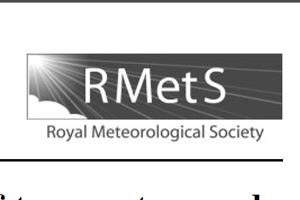
abstract
In this study, spatial and temporal patterns of changes in extreme events of temperature and precipitation at 143 weather stations in ten Asia-Pacific Network (APN) countries and their associations with changes in climate means are examined for the 1955–2007 period. Averaged over the APN region, annual frequency of cool nights (days) has decreased by 6.4 days/decade (3.3 days/decade), whereas the frequency of warm nights (days) has increased by 5.4 days/decade (3.9 days/decade). The change rates in the annual frequency of warm nights (days) over the last 20 years (1988–2007) have exceeded those over the full 1955–2007 period by a factor of 1.8 (3.4). Seasonally, the frequencies of summer warm nights and days are changing more rapidly per unit change in mean temperatures than the corresponding frequencies for cool nights and days. However, normalization of the extreme and mean series shows that the rate of changes in extreme temperature events are generally less than that of mean temperatures, except for winter cold nights which are changing as rapidly as the winter mean minimum temperature. These results indicate that there have been seasonally and diurnally asymmetric changes in extreme temperature events relative to recent increases in temperature means in the APN region. There are no systematic, regional trends over the study period in total precipitation, or in the frequency and duration of extreme precipitation events. Statistically significant trends in extreme precipitation events are observed at fewer than 30% of all weather stations, with no spatially coherent pattern of change, whereas statistically significant changes in extreme temperature events have occurred at more than 70% of all weather stations, forming strongly coherent spatial patterns.
Copyright 2009 Royal Meteorological Society
KEY WORDS extreme climate indices; climate means; sensitivity of extreme climate events; Asia-Pacific Network (APN); climate change
Received 4 January 2009; Revised 2 June 2009; Accepted 3 June 2009


































